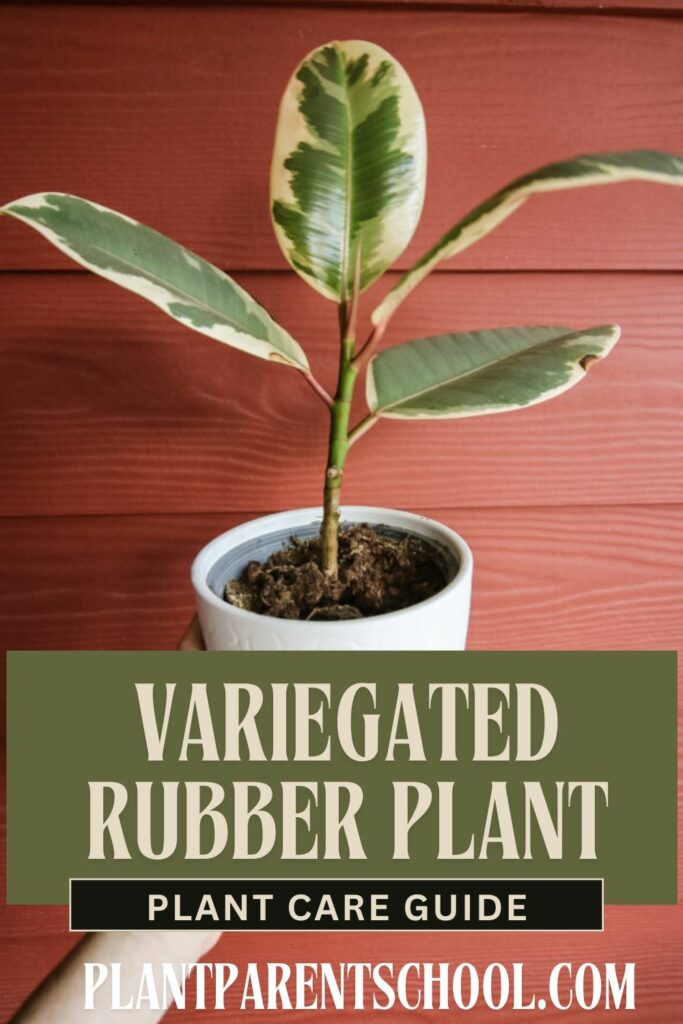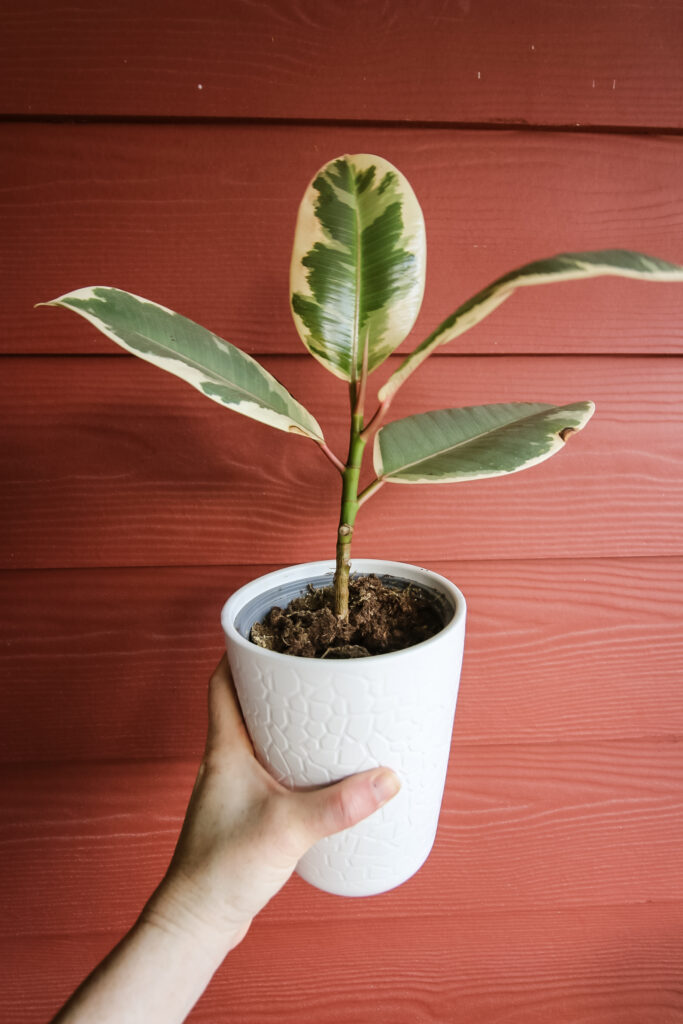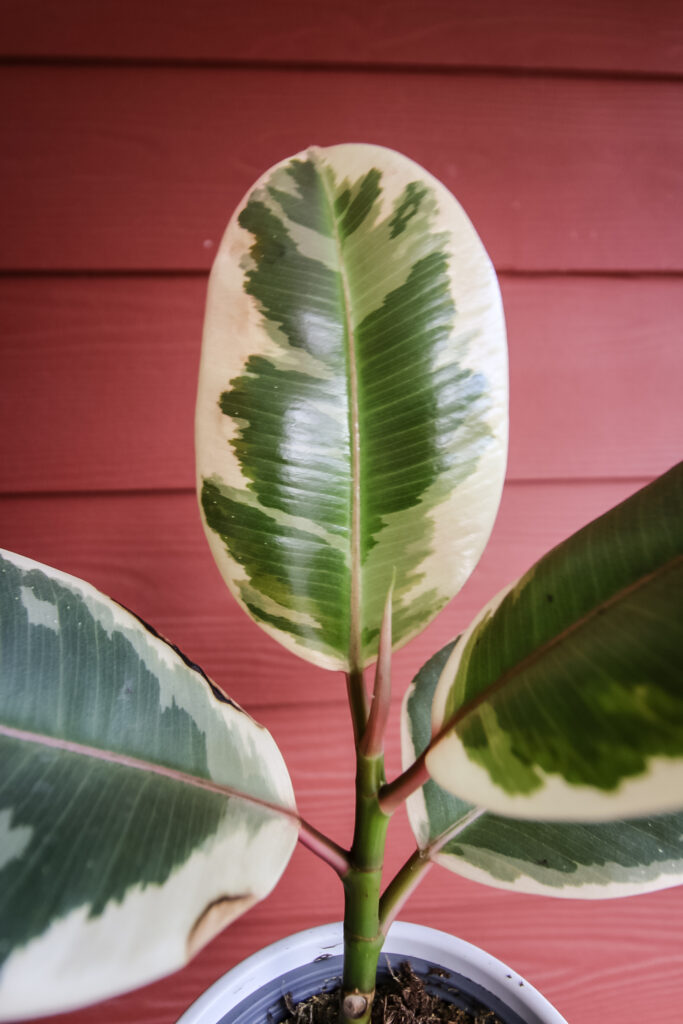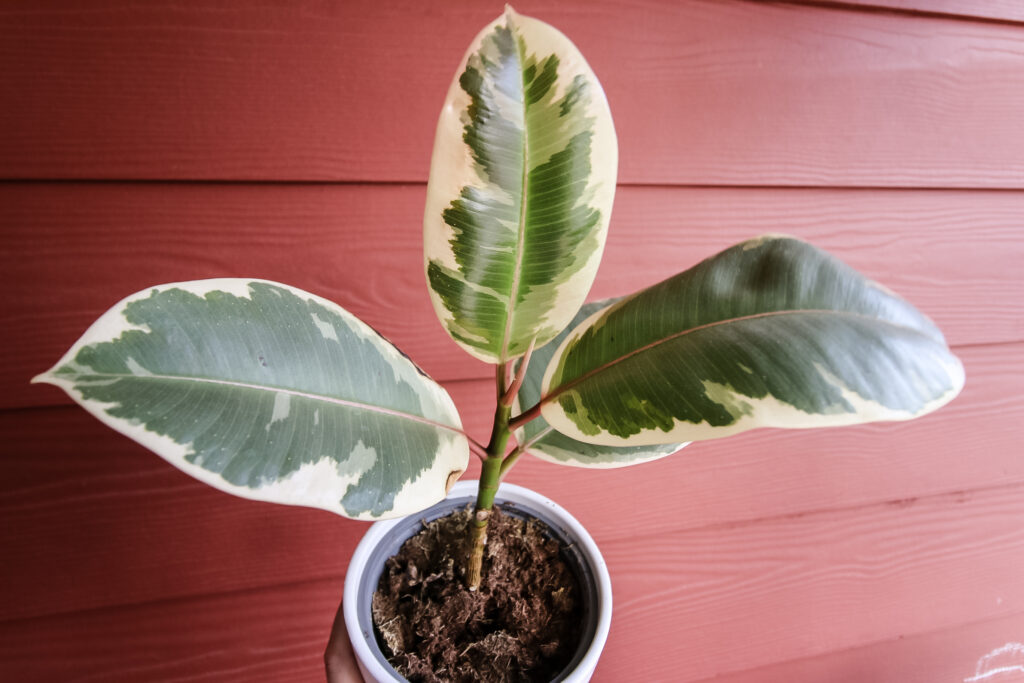The Variegated Rubber Plant, a striking houseplant with beautiful variegated leaves, is relatively easy to care for.
This guide will help you keep your plant healthy and thriving with simple care tips.
The Variegated Rubber Plant, also known as Ficus elastica 'Tineke,' is a popular indoor plant known for its large, glossy leaves with cream, green, and sometimes pinkish hues.
It's a fantastic choice for adding a touch of elegance and color to your indoor spaces.

Quick Look
- 🌞 Lighting needs: Bright, indirect light
- 💧 Watering needs: Moderate, allow the top inch of soil to dry out
- 📏 Mature Height: Up to 6-10 feet indoors
- 🌱 How to propagate: Stem cuttings
- 🚫 Toxic: Yes, to pets and humans if ingested
- 🌸 Flowering: No
Variegated Rubber Plant Care Guide
Here's what you need to know about taking care of a Variegated Rubber Plant.
Lighting
Variegated Rubber Plants thrive in bright, indirect light. Place them near a window with filtered sunlight, but avoid direct sun which can scorch their leaves.
They can tolerate lower light conditions but may lose some variegation.
Watering
Water your Variegated Rubber Plant when the top inch of the soil is dry. Overwatering can lead to root rot, so ensure the pot has proper drainage.
In the growing season (spring and summer), water more frequently, but reduce watering during fall and winter.

Humidity
While they can tolerate average household humidity, Variegated Rubber Plants prefer slightly higher humidity levels.
If the air is too dry, the leaves may develop brown edges. Using a humidifier or placing a tray of water near the plant can help.
Temperature
Keep your plant in a stable environment with temperatures between 60-75°F (15-24°C).
Avoid cold drafts and sudden temperature changes, which can stress the plant.
Soil
Use well-draining potting soil for your Variegated Rubber Plant. A mix designed for houseplants or one containing peat, pine bark, and perlite is ideal.
Ensure the pot has drainage holes to prevent water from sitting at the bottom.

Fertilization
Feed your plant with a balanced, water-soluble fertilizer every 4-6 weeks during the growing season.
Reduce feeding in the fall and winter when the plant’s growth slows down.
Pruning
Prune your Variegated Rubber Plant to maintain its shape and remove any dead or damaged leaves. Regular pruning can also encourage bushier growth.
Use clean, sharp scissors or pruning shears to avoid infections.
Propagation
Propagate your Variegated Rubber Plant using stem cuttings. Cut a healthy stem with at least one node and a few leaves, then place it in water or moist soil.
Roots should develop in a few weeks, after which you can transfer the cutting to a pot.

Pests and Problems
Common pests include spider mites, mealybugs, and scale. Check your plant regularly and treat any infestations with insecticidal soap or neem oil.
Yellowing leaves often indicate overwatering, while browning tips can suggest low humidity or underwatering.
Toxicity
Variegated Rubber Plants are toxic to pets and humans if ingested, causing irritation to the mouth and digestive tract.
Keep them out of reach of children and pets to avoid any potential issues.
By following these care tips, your Variegated Rubber Plant should flourish. Enjoy your gardening!
Want to Build Your Plant Care Confidence?
If you're ready to take your plant parenting to the next level, join Plant Parent School! This self-paced course will teach you everything you need to know about watering, lighting, troubleshooting, and more—so you can enjoy thriving houseplants with ease. Click here to enroll today!



Leave a Reply